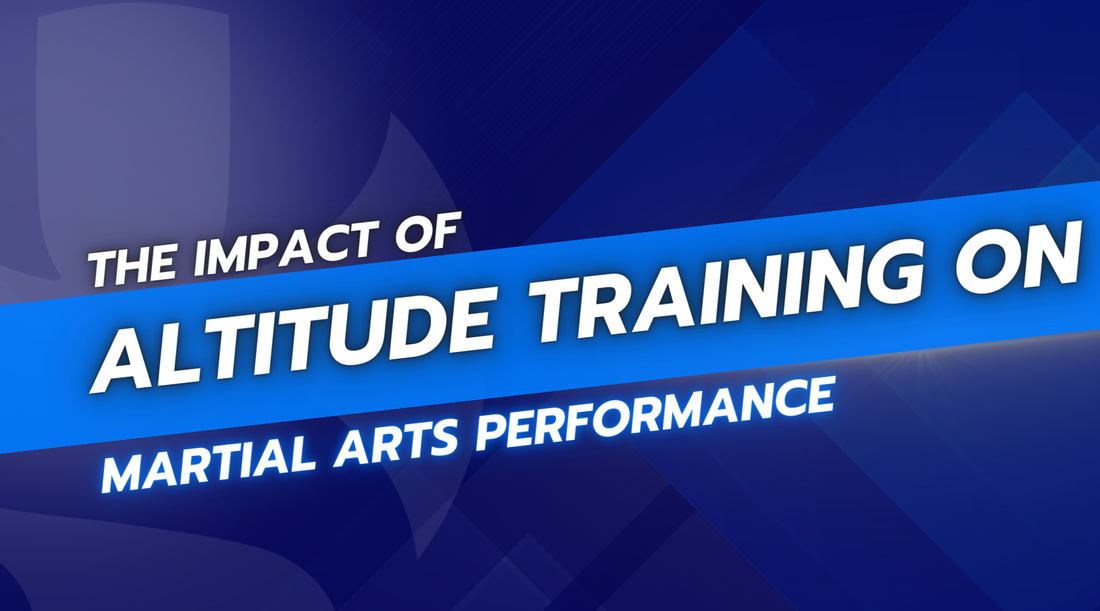
The Impact of Altitude Training on Martial Arts Performance
Share
Altitude training, a method where athletes train at high elevations, has become a crucial part of many sports training regimens. This technique leverages the reduced oxygen levels found at higher altitudes to enhance physical performance. In martial arts, where endurance, strength, and mental toughness are vital, altitude training can offer significant benefits. Let’s delve into how altitude training impacts martial arts performance and why it’s becoming a go-to method for martial artists worldwide.
What is Altitude Training?
Altitude training involves training at elevations typically above 2,000 meters (6,562 feet). The lower oxygen levels at these altitudes compel the body to adapt by producing more red blood cells, which improves oxygen transport and overall stamina. This physiological adaptation is why altitude training is highly valued in endurance sports and increasingly in martial arts.
Altitude Training Methods
There are several methods of altitude training, each with its unique benefits:
- Live High, Train Low (LHTL): Athletes live at high altitudes but train at lower elevations. This method maximizes the benefits of acclimatization while allowing high-intensity training at lower altitudes.
- Live High, Train High (LHTH): Both living and training are conducted at high altitudes. This method is intense and suits those who can handle sustained periods of hypoxia.
- Intermittent Hypoxic Training (IHT): Athletes train at low altitudes but simulate high-altitude conditions using hypoxic chambers or masks.
The Science Behind Altitude Training
The core benefits of altitude training stem from its impact on the body’s oxygen-carrying capacity:
- Increased Red Blood Cell Production: High altitudes stimulate erythropoiesis, increasing red blood cell count and enhancing oxygen delivery to muscles.
- Enhanced Oxygen Delivery: Improved capillary density and mitochondrial function aid in better oxygen utilization.
- Improved Endurance and Stamina: Enhanced aerobic capacity and efficiency allow athletes to perform longer and at higher intensities.
Altitude Training and Martial Arts: A Perfect Match
Martial arts demand a blend of cardiovascular endurance, muscle strength, and mental resilience. Altitude training addresses these needs effectively, making it a perfect match for martial artists seeking to enhance their performance.
Improved Cardiovascular Endurance
Cardiovascular endurance is critical in martial arts, where sustained energy output and recovery are essential. Altitude training boosts cardiovascular efficiency, allowing martial artists to maintain high-intensity efforts for longer periods, crucial during sparring sessions and competitions.
Enhanced Muscle Strength and Endurance
Martial arts require powerful and enduring muscles. Altitude training improves muscle endurance by enhancing oxidative capacity and delaying muscle fatigue. This adaptation is particularly beneficial in disciplines like judo or Brazilian jiu-jitsu, where prolonged grappling is common.
Better Respiratory Efficiency
The respiratory system’s efficiency is paramount in martial arts. Altitude training enhances lung capacity and breathing efficiency, ensuring that martial artists can sustain high levels of exertion without quick exhaustion. Better respiratory efficiency translates to improved overall performance.
Psychological Benefits of Altitude Training
Altitude training also bolsters mental toughness. Training in hypoxic conditions is challenging, and overcoming these difficulties can significantly enhance an athlete’s mental resilience. This psychological edge is invaluable in martial arts, where mental fortitude can often determine the outcome of a match.
Case Studies and Examples
Numerous martial artists have reaped the benefits of altitude training. For instance, MMA fighters who have incorporated high-altitude training into their regimens have reported improved endurance and performance. These success stories underscore the potential of altitude training in enhancing martial arts performance.
Practical Considerations for Altitude Training
To effectively incorporate altitude training, martial artists should consider the following:
- Duration and Frequency: Consistency is key. Regular sessions over several weeks are necessary to see significant benefits.
- Choosing the Right Altitude: Training at moderate altitudes (2,000-3,000 meters) is often sufficient for most benefits.
- Monitoring Progress: Keeping track of performance metrics and adjusting the training regimen accordingly ensures optimal benefits.
Risks and Challenges of Altitude Training
Despite its benefits, altitude training comes with risks:
- Potential Risks: Issues like altitude sickness can arise, and it’s crucial to acclimate properly.
- Common Challenges: Athletes may face reduced training intensity initially due to lower oxygen levels, requiring gradual adaptation.
Integrating Altitude Training into Martial Arts Regimens
Here’s how martial artists can incorporate altitude training:
- Step-by-Step Guide: Start with short, controlled sessions and gradually increase duration and intensity.
- Balancing Training: Ensure a balanced mix of altitude training and regular martial arts practice to maintain skill development.
Technology and Altitude Training
Advancements in technology have made altitude training more accessible:
- Hypoxic Chambers and Masks: These tools simulate high-altitude conditions without the need to travel.
- Technological Advancements: Modern equipment allows precise control over hypoxic conditions, enhancing the training experience.
Final Thoughts
Altitude training offers a myriad of benefits for martial artists, from improved cardiovascular and respiratory efficiency to enhanced mental toughness. By carefully integrating altitude training into their regimens, martial artists can gain a significant edge in performance, endurance, and resilience.
